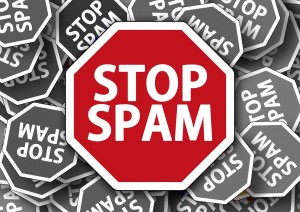3 Things You Need To Do To Avoid Sending Spam

How can you stop spam?
Email marketing has been plagued by one tactic that has always meant that businesses have to be careful how they conduct themselves: spamming. The practice, where customers are sent copious numbers of emails or are sent emails they never wanted, has led to legislation across the world. Some countries have included legislation that has meant that a company found sending spam could face hefty fines.
Spam isn’t exactly worthwhile. Unsolicited emails generally produce poorer results, low return on investment and damage brand reputation. While having a large enough list of names might offer better sales over one email – in the long term and after potential legal costs, the returns will be greatly diminished and your brand’s image ruined.
It is the company which is represented in the email, and not any third party supplier, who is responsible for the conduct of the email marketing campaign. Therefore, it is important that you know how to avoid sending spam. In theory, this only requires the careful implementation of three checks in your campaigns before you send a single email.
Here are the three checks you must complete to avoid sending spam and ensure your subscribers only get the messages they want.
1. Use Volunteers
The first and most important check is to ensure that your subscribers are only those that have signed up to your email marketing list in the first place. It is illegal to send emails to anyone who has not opted to receive emails.
While it is not a legal requirement in every country, the best way to ensure that this step is taken is to use the double opt-in methodology. This is when a subscriber signs up to your mailing list on your website or another platform (i.e. social media) and is then sent an email asking for their confirmation.
This helps to prevent your emails being marked as spam by ensuring that your subscribers know what their actions will result in. It also gives them a chance to say they don’t really want the emails or to prevent a third party from signing up people who have no interest in your products and services.
Many email marketing service providers make this system available as part of their service for free, so there is no complicated programming or other activity to undertake.
2. Segregate Email Subscribers
Another important action is to ensure that you are sending the right emails to your subscribers. This process, known as segmentation, is a vital step to ensure that your business’ contacts aren’t sent marketing messages that they aren’t interested in or that are irrelevant to them.
For instance, imagine you run an electronics store and you have a deal on a complimentary product to another. Sending it to everyone on the list will result in many people receiving the email who don’t have the original product and therefore, buying the complimentary product is not worthwhile. By segmenting the list so that only those who have bought the first product can result in better uptake and results.
Segmentation can take many different directions so it is best to understand your audience and use their behaviours to help you determine what segment they need to be assigned to.
3. Limit Your Email Campaigns
The more emails you send, the more like spammers you will appear. That is the simple conclusion from those that continuously send emails. Customers grow weary, even if all they do is delete your email. Therefore, consider how often you are creating your email campaigns and sending them out.
There isn’t an optimum number for the frequency of emails to send per week as it will differ between audiences, industries and products. However, if you are getting a high proportion of complaints or a high unsubscribe rate with your email campaigns, you might need to rethink your strategy.
If you segment your list, as mentioned above, this can also help reduce the number of emails each subscriber will receive.
Conclusion
Email marketing is highly effective when it comes to generating interest and sales for your brand’s products or services. But it is important that you ensure your company doesn’t practice spamming tactics. To comply with laws and best practice, it is best to use the double opt-in methodology, segment email lists and limit the frequency of emails. This way you will always seem legitimate and be in favour with those on your mailing list.
Tagged in: email marketing strategy, spam, SPAM laws